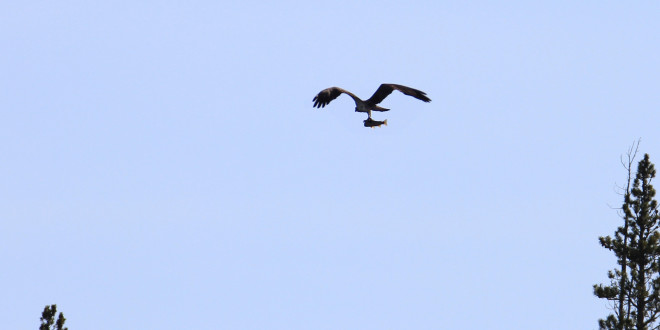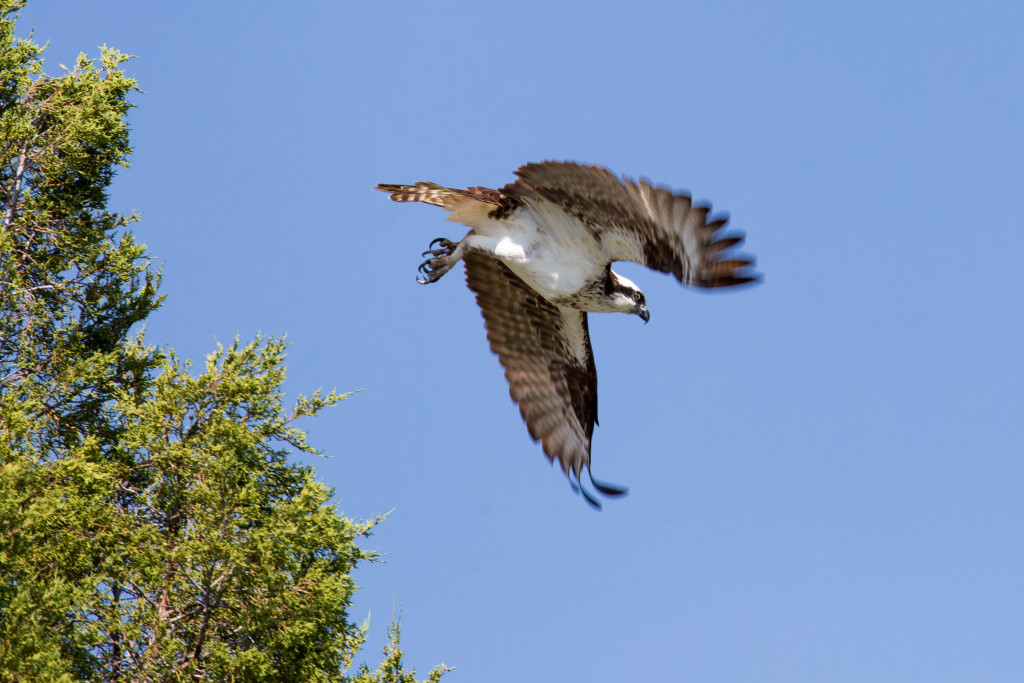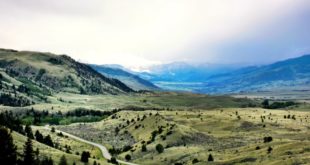Have you ever seen an osprey in Yellowstone National Park? They’re not uncommon if you know where to look.
Specifically, you should look near water: the shores of Lake Yellowstone, along the Madison, Firehole or Yellowstone River, and near canyons (Gardner, Grand Canyon of the Yellowstone). Those waters provide ospreys with their favorite food: fish. Specifically, they provide Yellowstone ospreys with trout.
Indeed, the change in trout populations in recent years helps explain, in part, the number of ospreys in Yellowstone National Park. Recent cutthroat reintroduction efforts will (hopefully) lead to an increase in ospreys in Yellowstone National Park.
Osprey numbers were on the decline for the first half of the 20th century due, in no small part, to DDT poisoning, as documented in Rachel Carson’s Silent Spring. They have rebounded quite nicely in recent years.
Osprey reproduction has been on the rise in Yellowstone National Park since 2003. In 2014, 30 nests were monitored; 73% yielded new ospreys. This is up from the expected 50% yearly average.
Ospreys stand out from other raptors insofar as they subsist mainly on fish. But like all raptors, they have an elegant way of obtaining their food. With their stunningly precise vision, ospreys find fish and, like a missile, rocket toward their quarry.
Basic Facts
- Species name: Pandion haliaetus
- Also known as fish eagles or fish hawks.
- Smaller than bald eagles, but just barely.
- Has white belly/head with dark eye streak, brown wings.
- Female ospreys are slightly larger than males.
- Wings are more kinked than other raptors like red-tailed hawks.
Habitat
- Stay almost exclusively near bodies of water.
- Prefer to nest on pinnacles like dead trees and poles.
- In Yellowstone, ospreys generally stay between April and September.
Nesting/Young
- Lay 2-3 eggs in May/June.
- Eggs are cream-white with brown blotches.
- Eggs hatch after 4-5 weeks.
- Eggs do not hatch all at once, which can affect who lives depending on food abundance.
- Fledgling osprey appear speckled, with light edges on their back/upper wing feathers.
- Young begin flying 51-54 days after hatching.
Dive! Dive!
- Ospreys hunt quite simply: circling bodies of water until they spot something.
- Ospreys (along with all raptors) have two foveae i.e. centers of focus, which makes their eyesight exceptionally sharp.
- When diving, ospreys descend talons first.
- Ospreys possess a reversible outer toe and barbed soles in order to more effectively catch fish.
- On average, an osprey spends 12 minutes hunting before making a successful catch.
- Diving factors into courtship practices: males will circle a nesting site and dive for fish or sticks, in essence showing off his prowess.
 Yellowstone Insider Your Complete Guide to America's First National Park
Yellowstone Insider Your Complete Guide to America's First National Park







You must be logged in to post a comment.